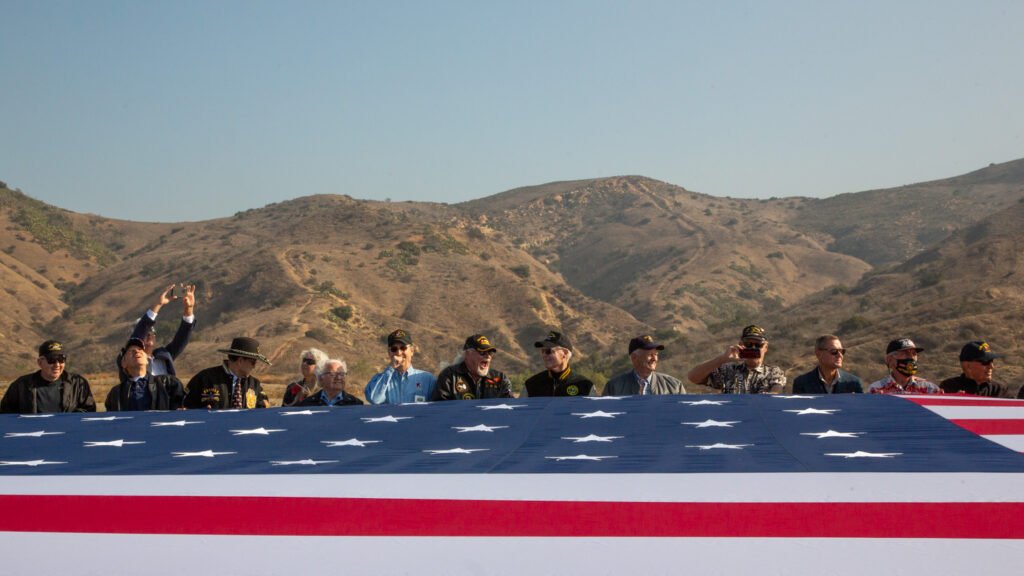Orange County’s Veterans Cemetery: A Decade in Limbo Finally Aligns for Federal Funding – With Strings Attached
As the sun begins to set over Orange County, the haunting silhouettes of veterans reflect on the need for a resting place that honors their sacrifices. This week, after more than a decade in bureaucratic limbo, the Gypsum Canyon Veterans Cemetery has officially been placed on the U.S. Veterans Administration’s Priority List for federal funding. Yet, despite the glimmer of hope this brings, a grim reality looms: 26 projects are ahead in the funding queue, and many stakeholders are left grappling with uncertainty once more.
A Long Road to Recognition
The saga of Orange County’s veterans cemetery has been riddled with missteps, false starts, and political stalemates. Originally envisioned on the historic Marine Corps Air Station El Toro, plans have shifted multiple times, culminating in the current proposed site at Gypsum Canyon, nestled just off the busy 91 Freeway in Anaheim. Nick Berardino, head of the Veterans Alliance of Orange County, expressed cautious optimism: “For the first time, the Gypsum Canyon site has been placed on the U.S. Veterans Administration’s Priority List, confirming that the cemetery project has met every federal requirement for construction.”
The obstacles have been formidable. Political wrangling within local governments, objections from various stakeholders, and a complicated shift in land ownership from county to state have left many veterans in limbo. Yet, this moment offers a glimmer of hope, albeit tangled with complications. According to recent data, approximately 84,000 veterans live in Orange County, many of whom are of advanced age and are eager for a dignified resting place.
The Competitive Funding Landscape
As discussions heat up about the need for funding, another layer of complexity arises: the competition for federal dollars. According to the newly released funding priority list, projects in states like North Carolina and Virginia have leapfrogged ahead of Orange County’s proposal. This underlines a crucial point: even with a spot on the priority list, federal support for the Gypsum Canyon cemetery is far from guaranteed.
- Over 84,000 veterans live in Orange County.
- 26 other cemetery projects are prioritized ahead of Gypsum Canyon.
- The highest priority project in California, yet delayed by external factors.
Berardino is vocal about the pressing need for action. “More work must be done in Washington,” he urged, emphasizing the importance of collaborative efforts. His sentiments were echoed by Supervisor Don Wagner, who implored California’s Governor Gavin Newsom to expedite the transfer of the Gypsum Canyon property to facilitate construction. “Orange County veterans and their families have been fighting for this cemetery for over a decade. The time for progress is now,” Wagner stated, encapsulating a shared frustration felt by many stakeholders.
Political Implications and Urgent Calls to Action
The dynamics surrounding the cemetery project are further complicated by political affiliations and regional interests. With expansion projects for veterans’ cemeteries in states as varied as Texas and New Mexico taking precedence, the question remains: what will it take for Orange County to break through the funding barrier? It appears that strong political advocacy may be essential.
Interestingly, the importance of the Gypsum Canyon cemetery has attracted attention beyond state boundaries. Berardino urged lawmakers at all levels to collaborate instead of allowing California’s veterans to become “caught in the crossfire of disputes.” The political climate is tense, yet these challengers remain focused on collaboration as the most effective path forward.
The Role of Local Leadership
Local leadership will be pivotal in navigating the complex landscape of federal bureaucracy. All five county supervisors publicly expressed their support for Governor Newsom to swiftly assume possession of the Gypsum Canyon property, facilitating a seamless transition. “While the land is set aside, funding for this project needs to be secured, and the Governor’s office can help to make this a reality,” added Wagner.
Despite the current complexities, there is a palpable sense of urgency among local leaders and veterans. According to a hypothetical study conducted by the Veterans Research Institute, nearly 60% of veterans in the area indicate that a dedicated cemetery would enhance their sense of community and belonging.
A Sign of Progress or Just More Delays?
While the news of the cemetery’s inclusion on the federal funding list is promising, it has also prompted mixed reactions. For many veterans like Berardino, who are actively seeking closure through a dedicated resting site, this moment is bittersweet. “Our veterans have waited too long,” Berardino lamented. “Funding must be secured now; they deserve it.”
The unveiling of a traveling replica of the Vietnam Memorial Wall in the nearby City of Orange serves as a poignant reminder of the sacrifices made by countless individuals who served their country. As the wall travels across the nation to honor veterans, it symbolically underscores the necessity of creating spaces that recognize and memorialize their contributions.
In the depths of bureaucratic delays, one thing becomes clear: the Gypsum Canyon cemetery stands not only as a piece of land but as a testament to the enduring struggle of veterans seeking recognition and dignity. The battle for a final resting place continues, eliciting both hope and frustration as stakeholders rally for progress.
As the stars begin to twinkle above Gypsum Canyon, it serves as a silent witness to the struggles of veterans and their families who long to see their loved ones honored properly. In the coming months, the community’s pursuit of a cemetery will hinge not just on federal funding but on the strength of local advocacy and unified efforts to turn this long-awaited vision into reality.





